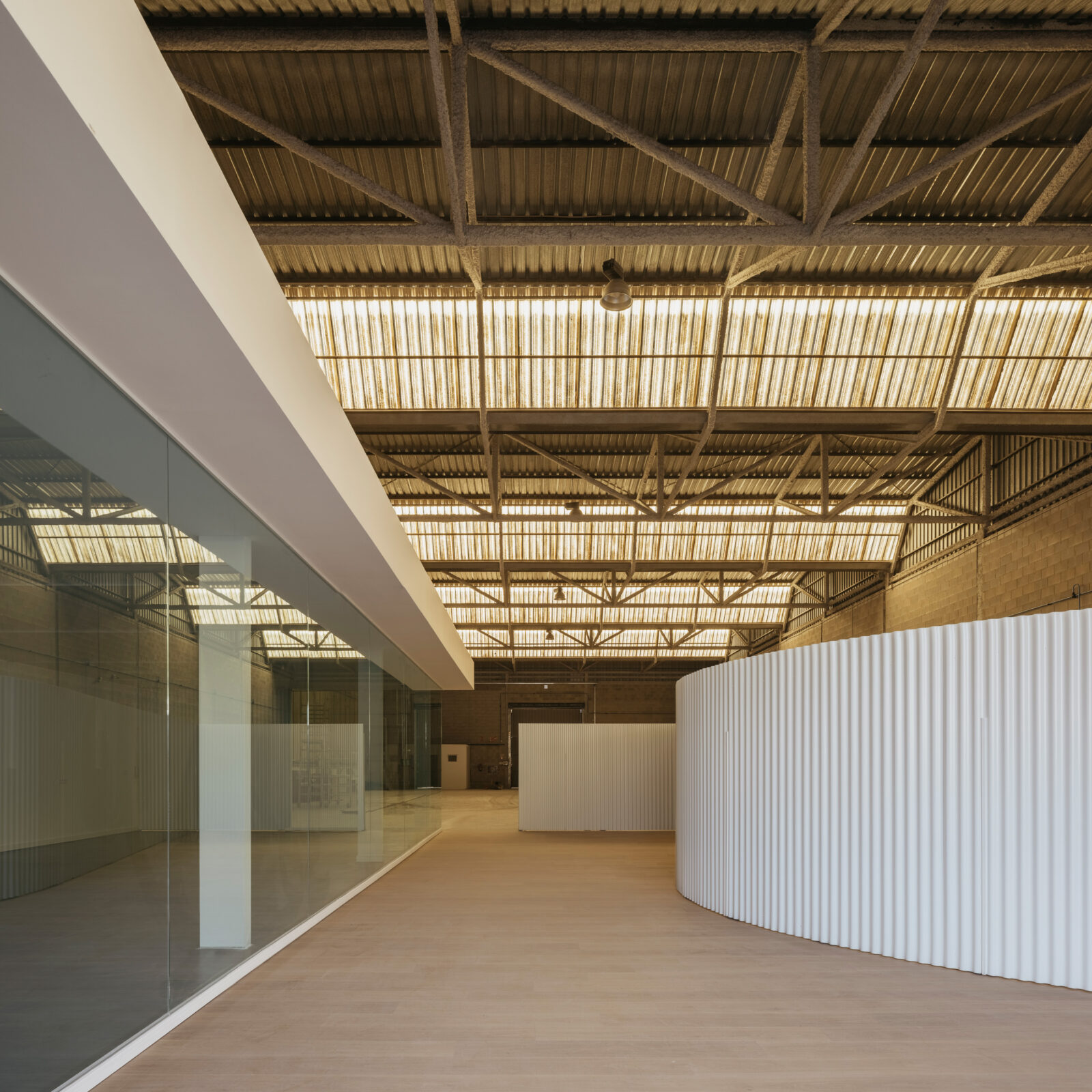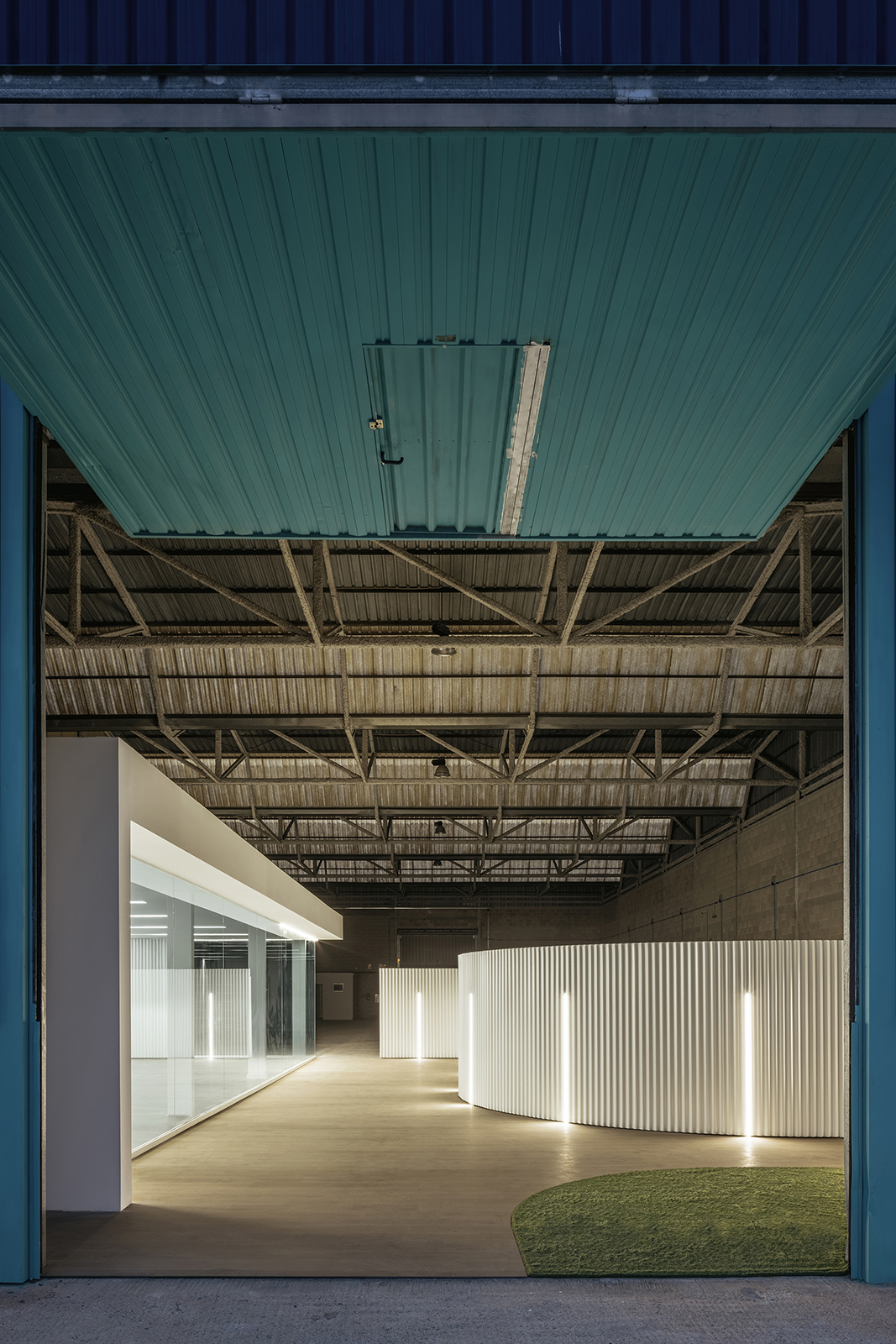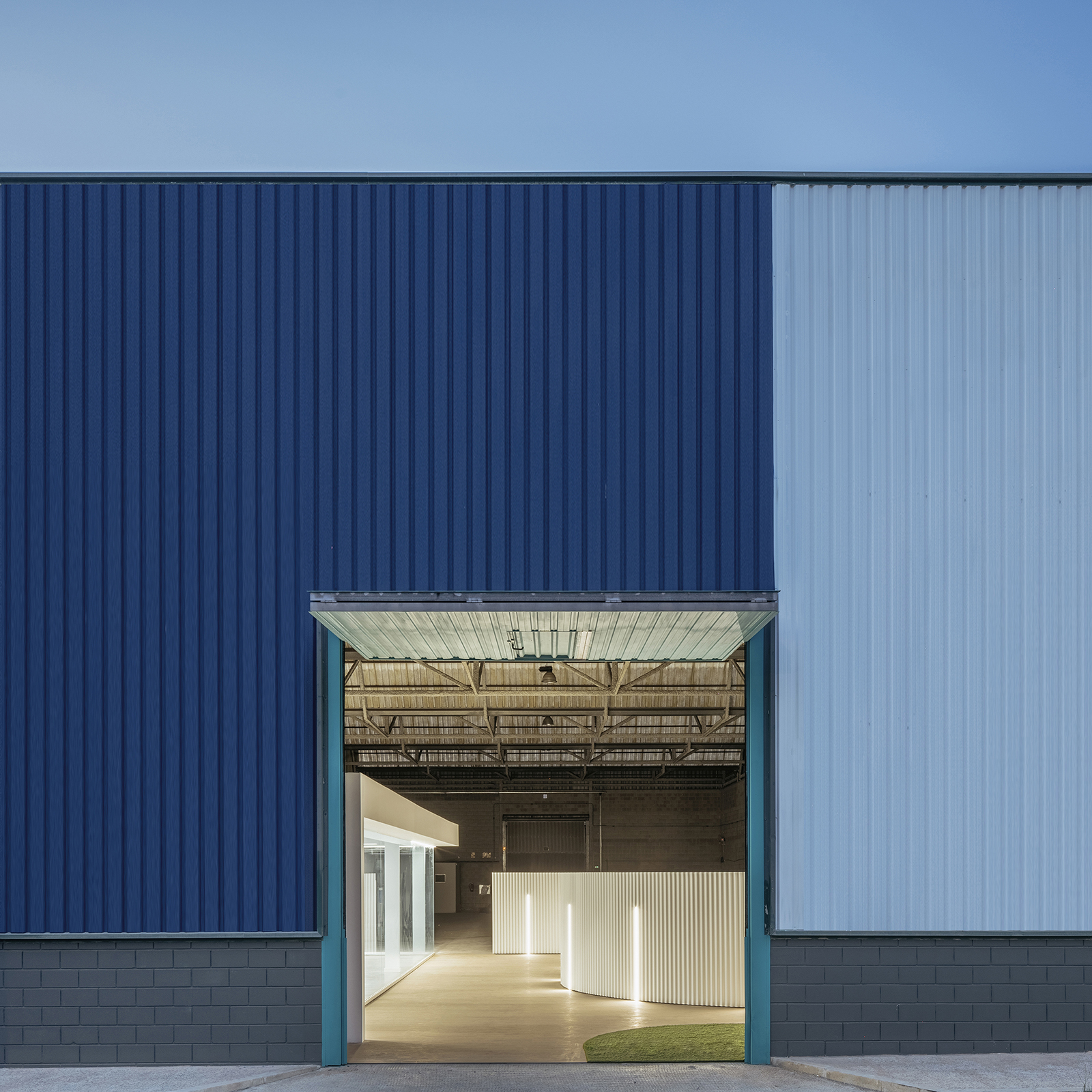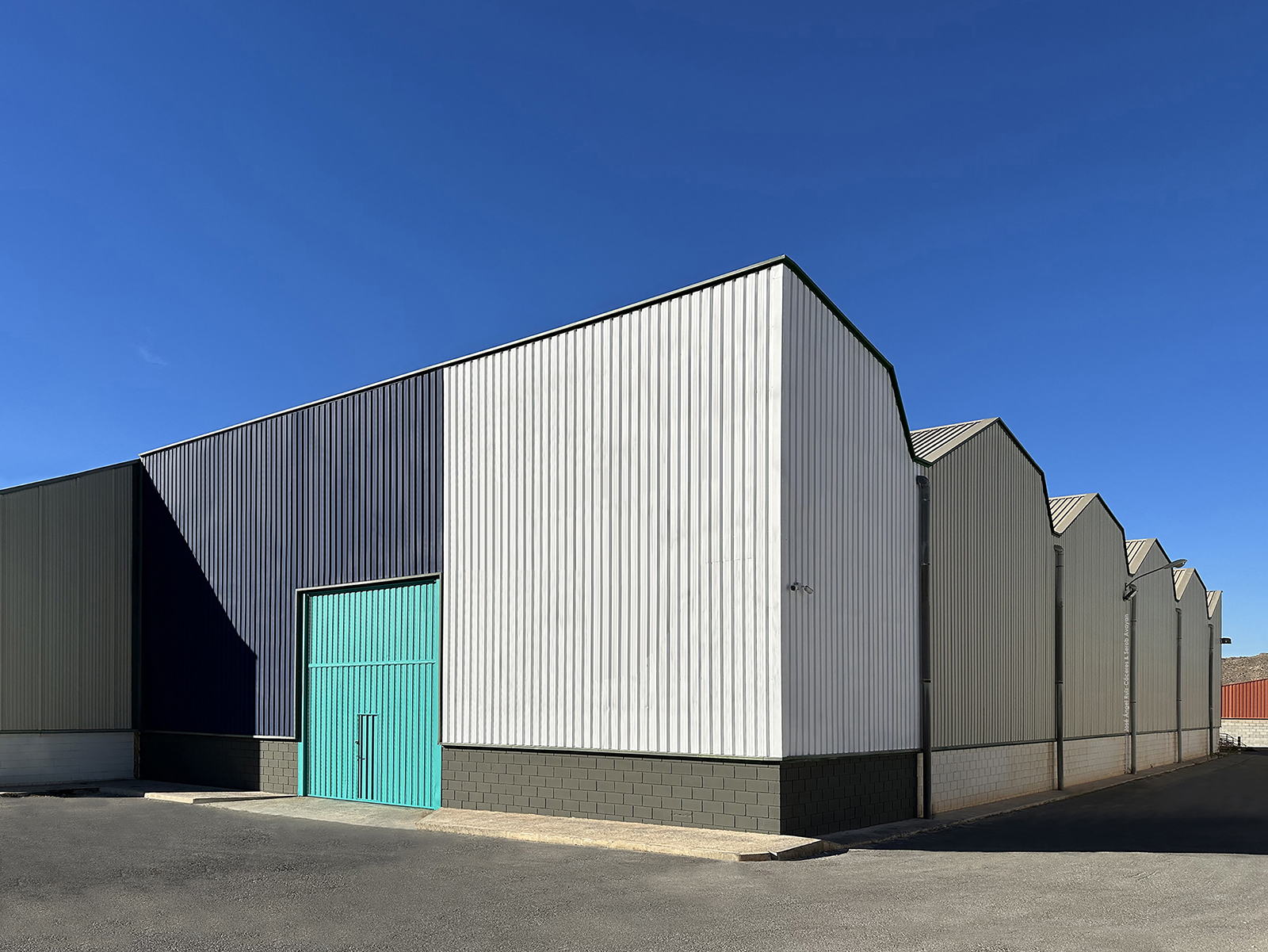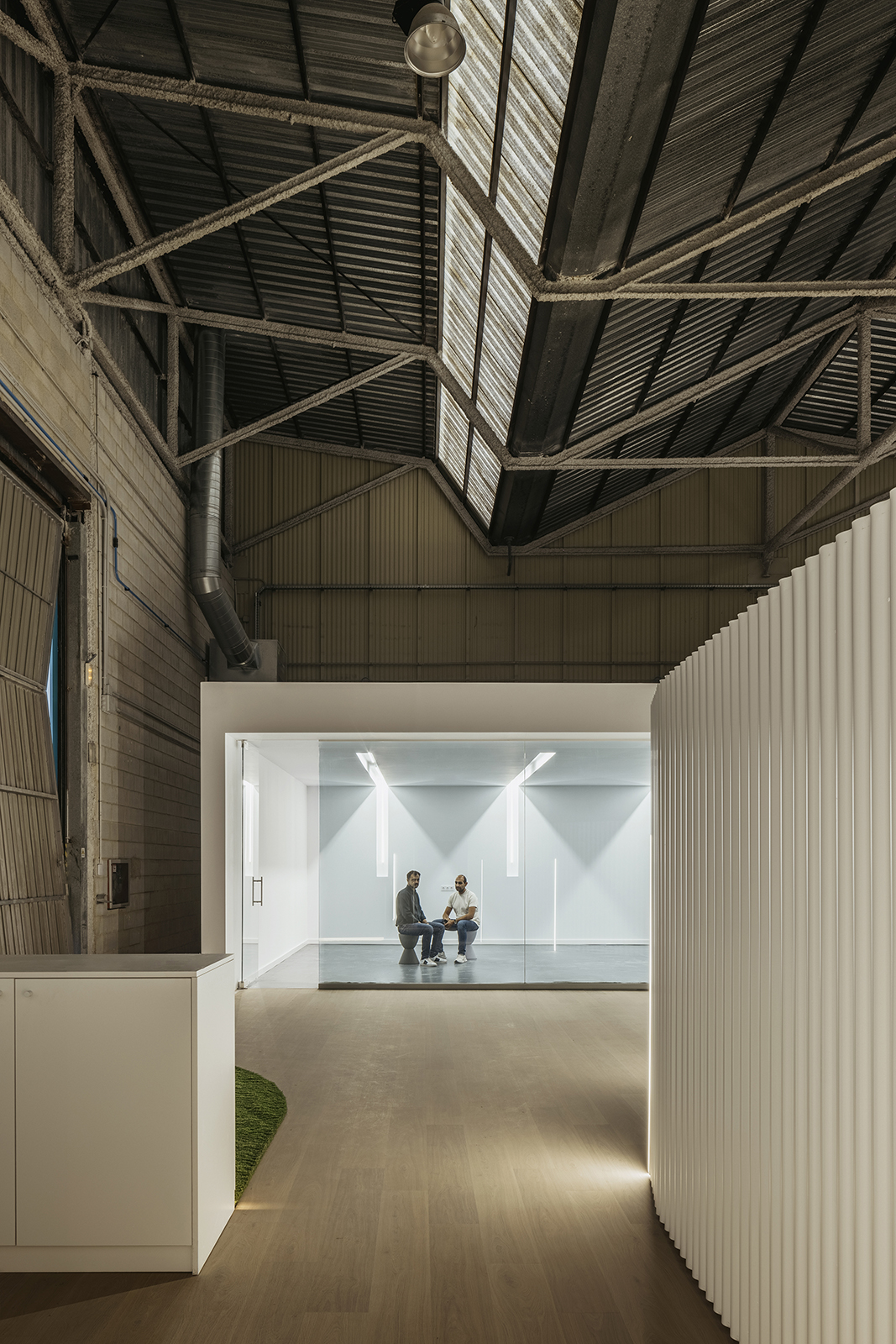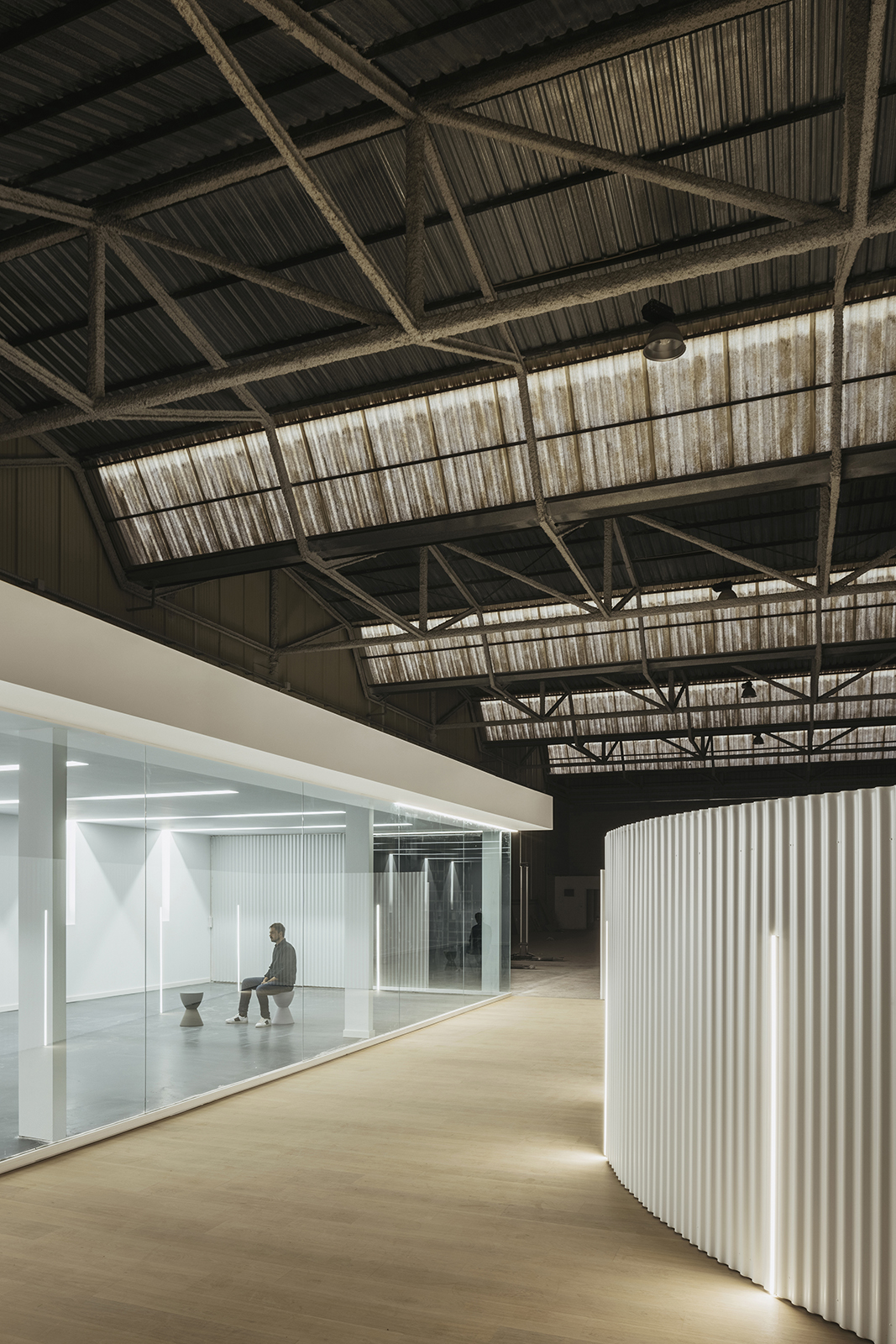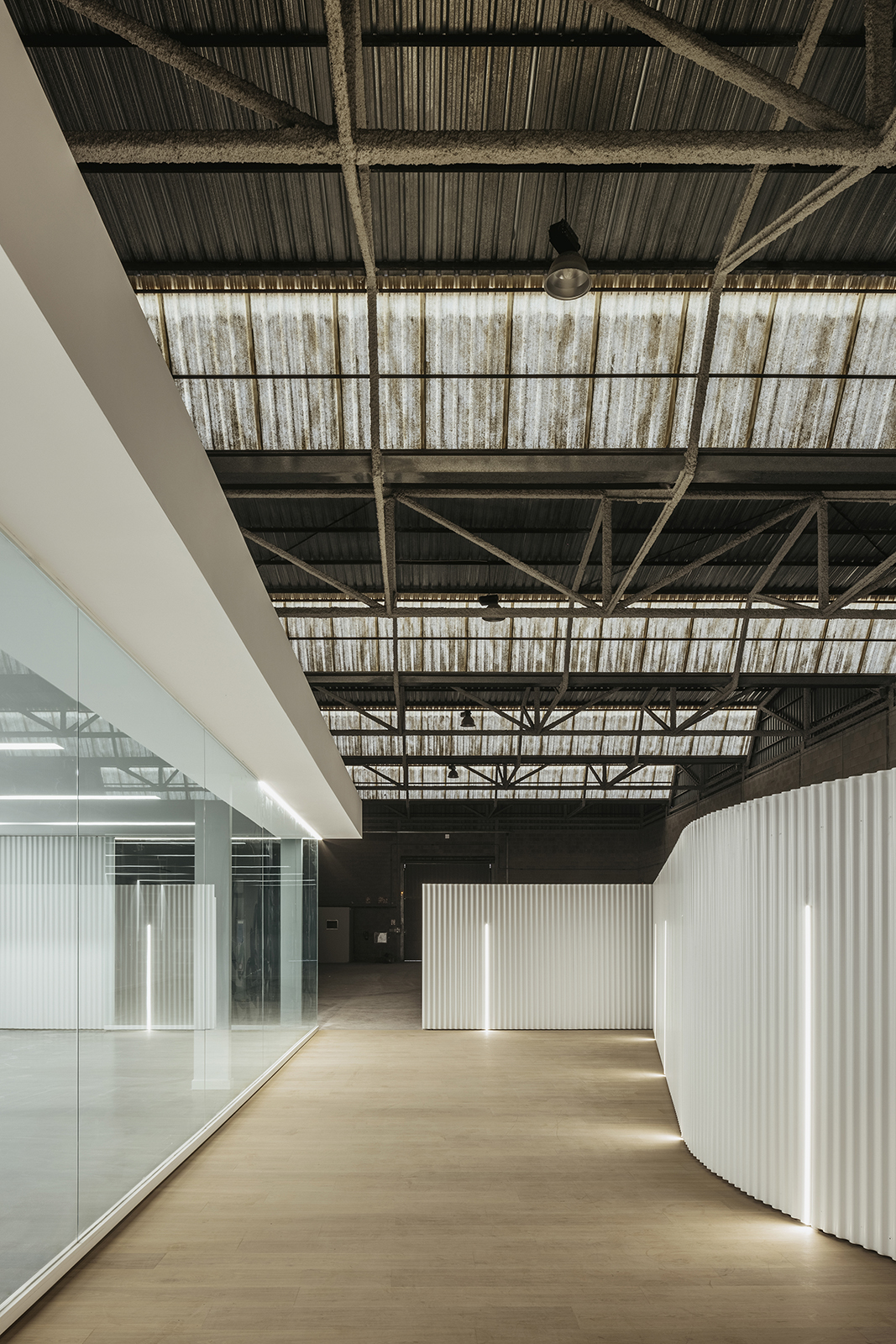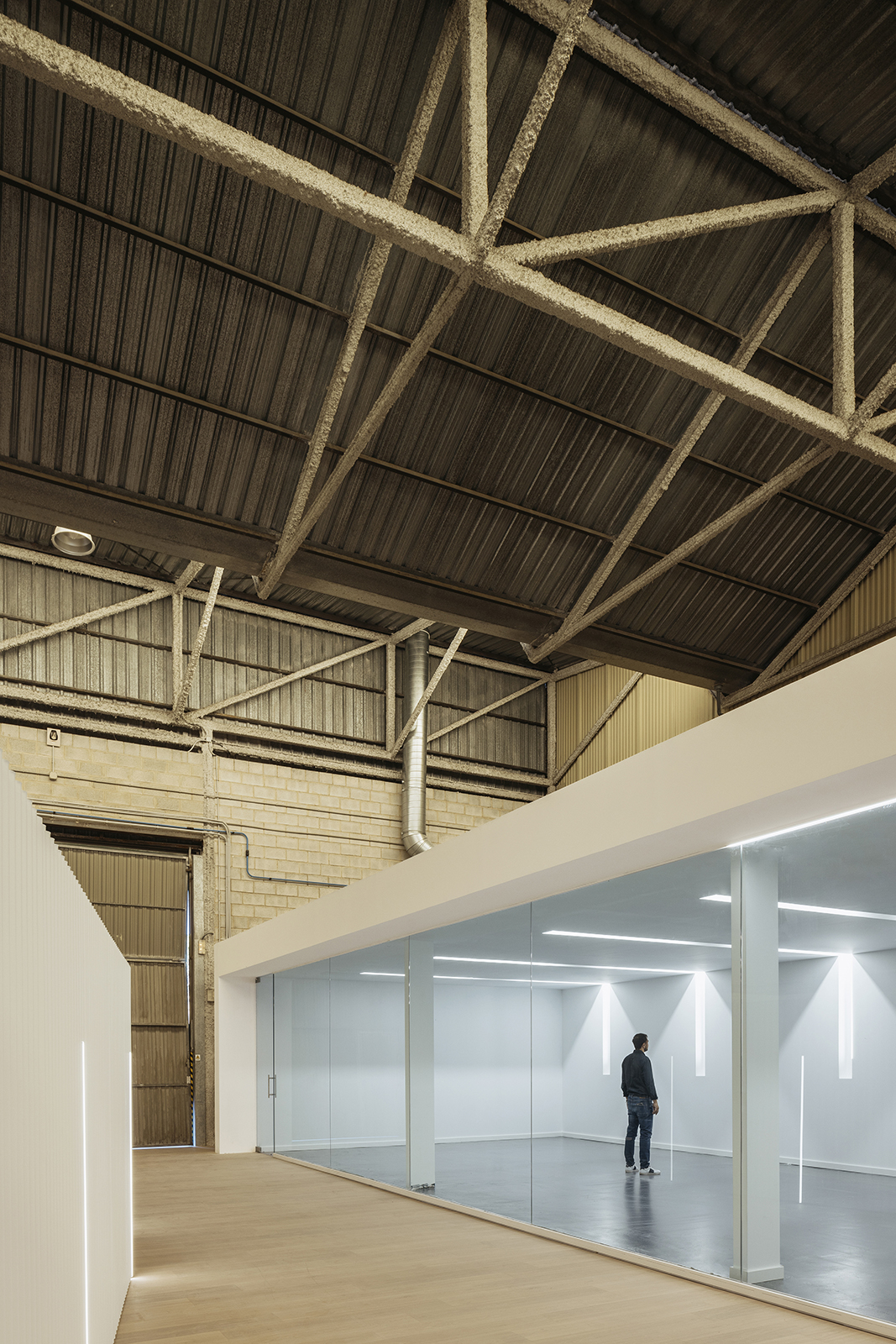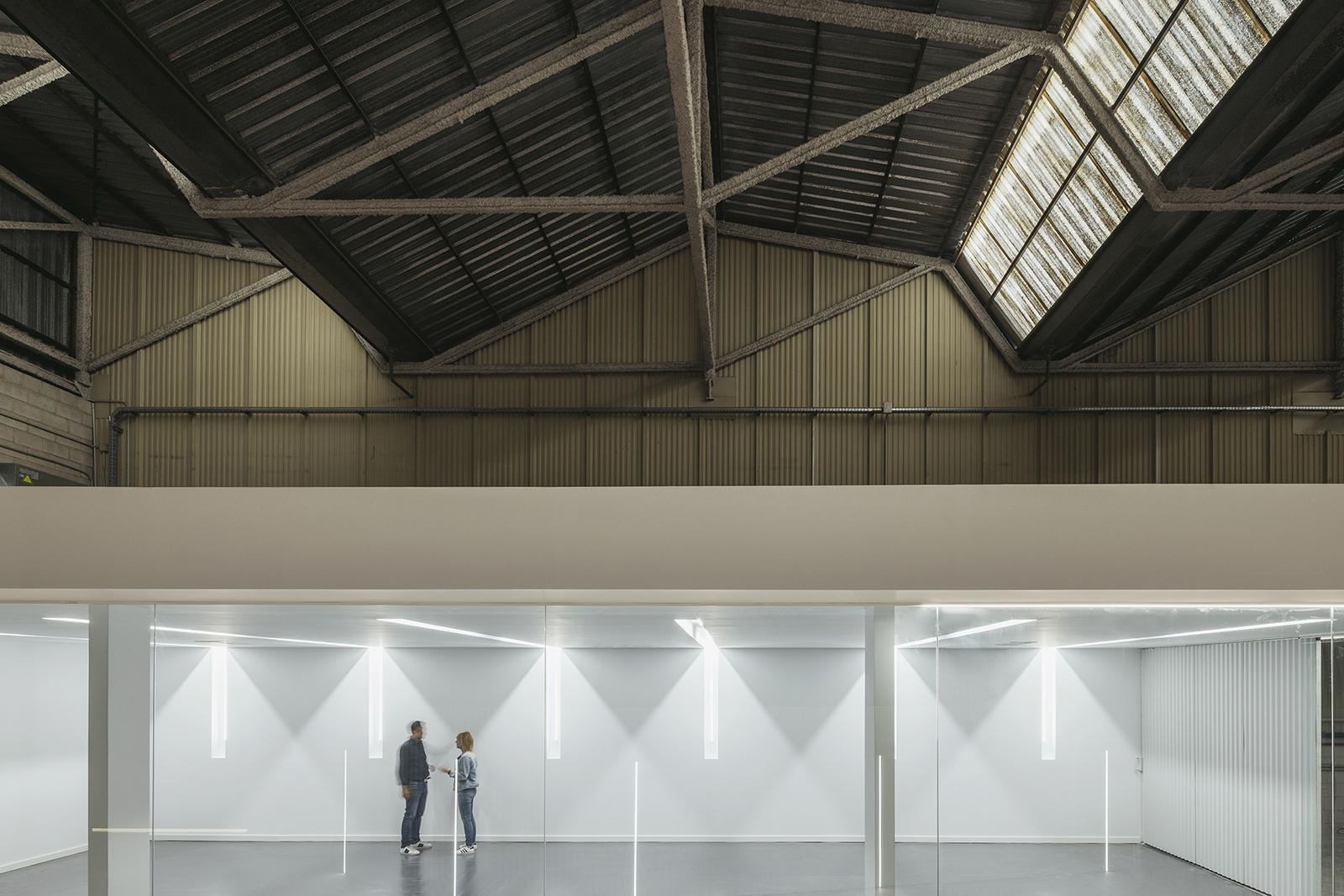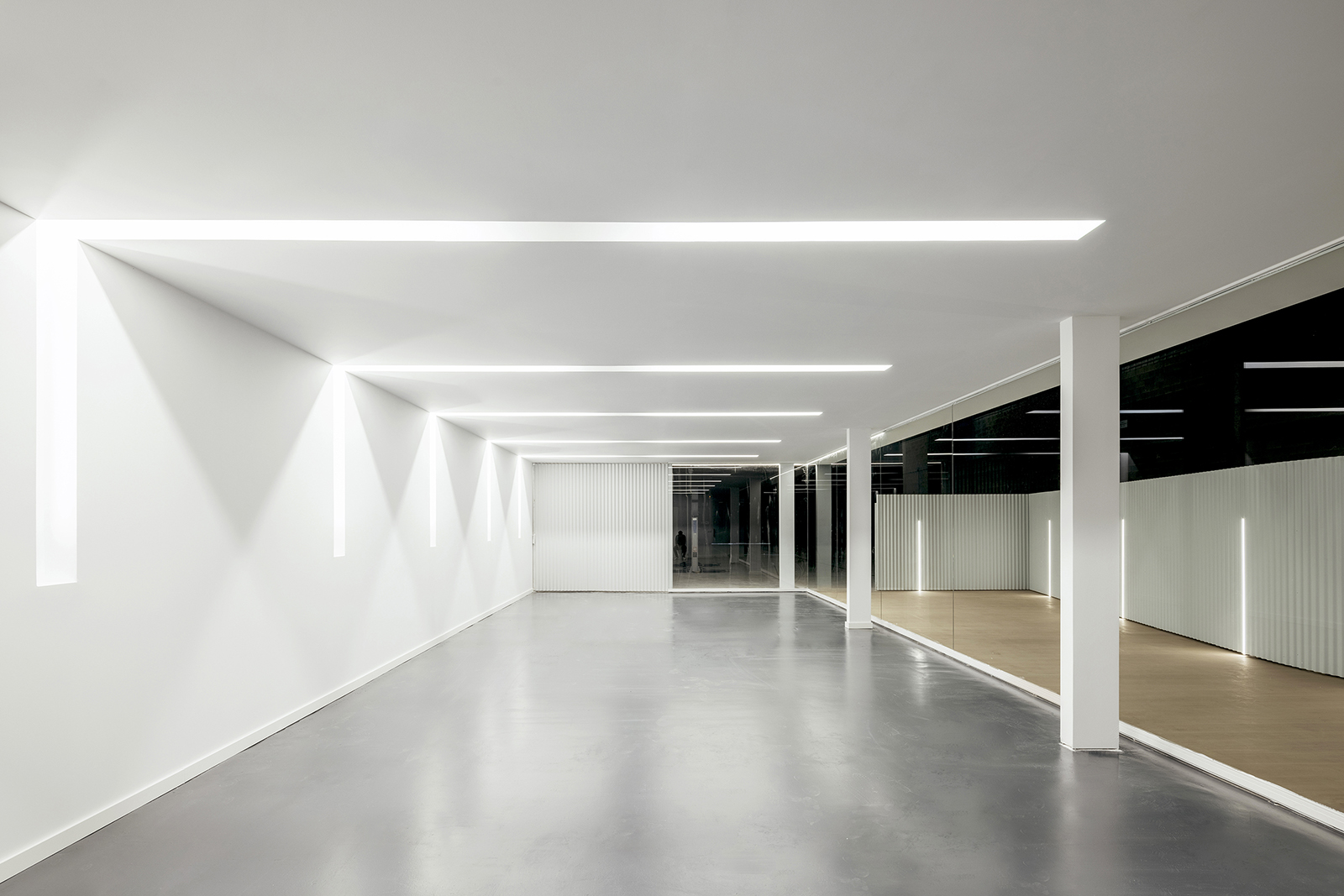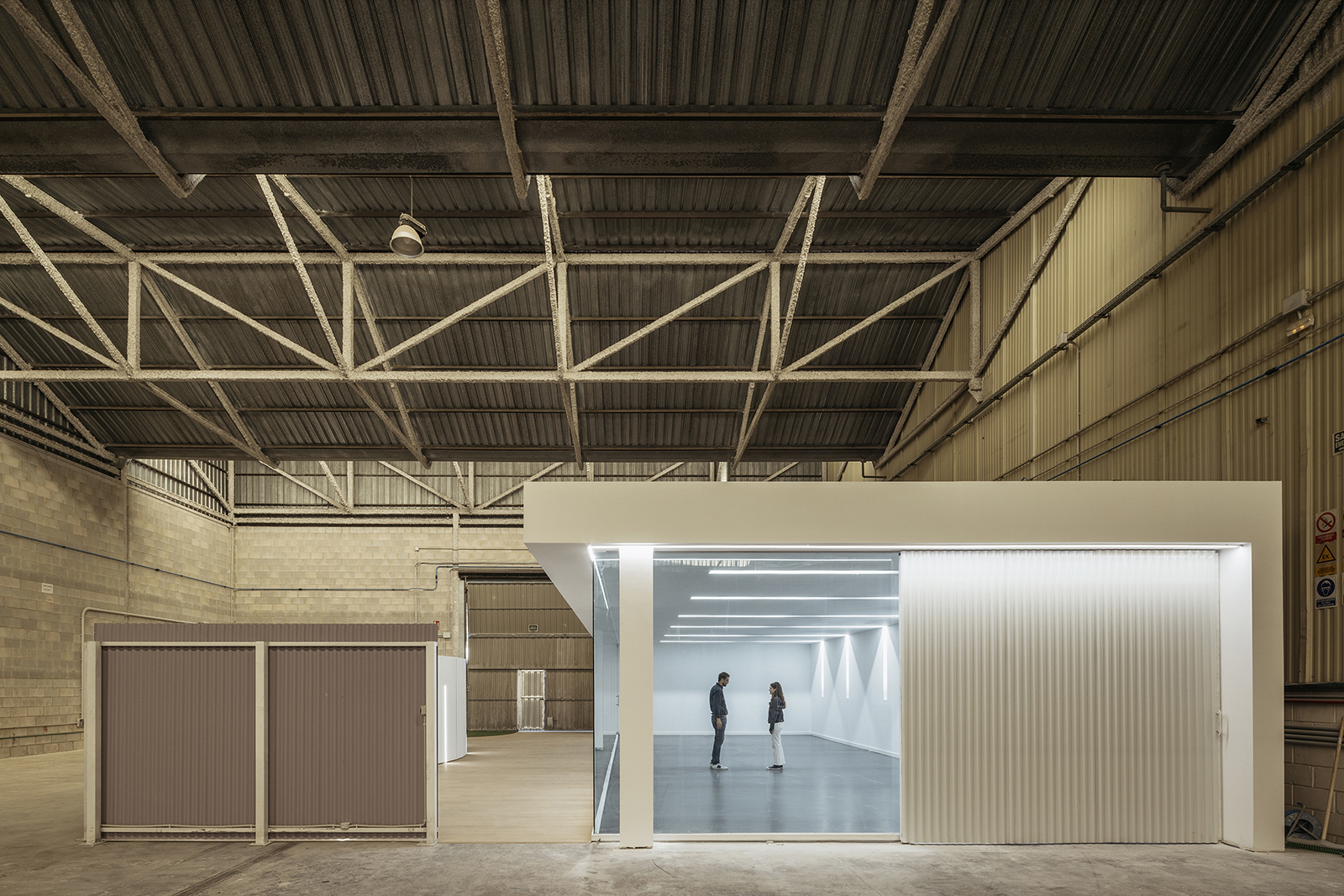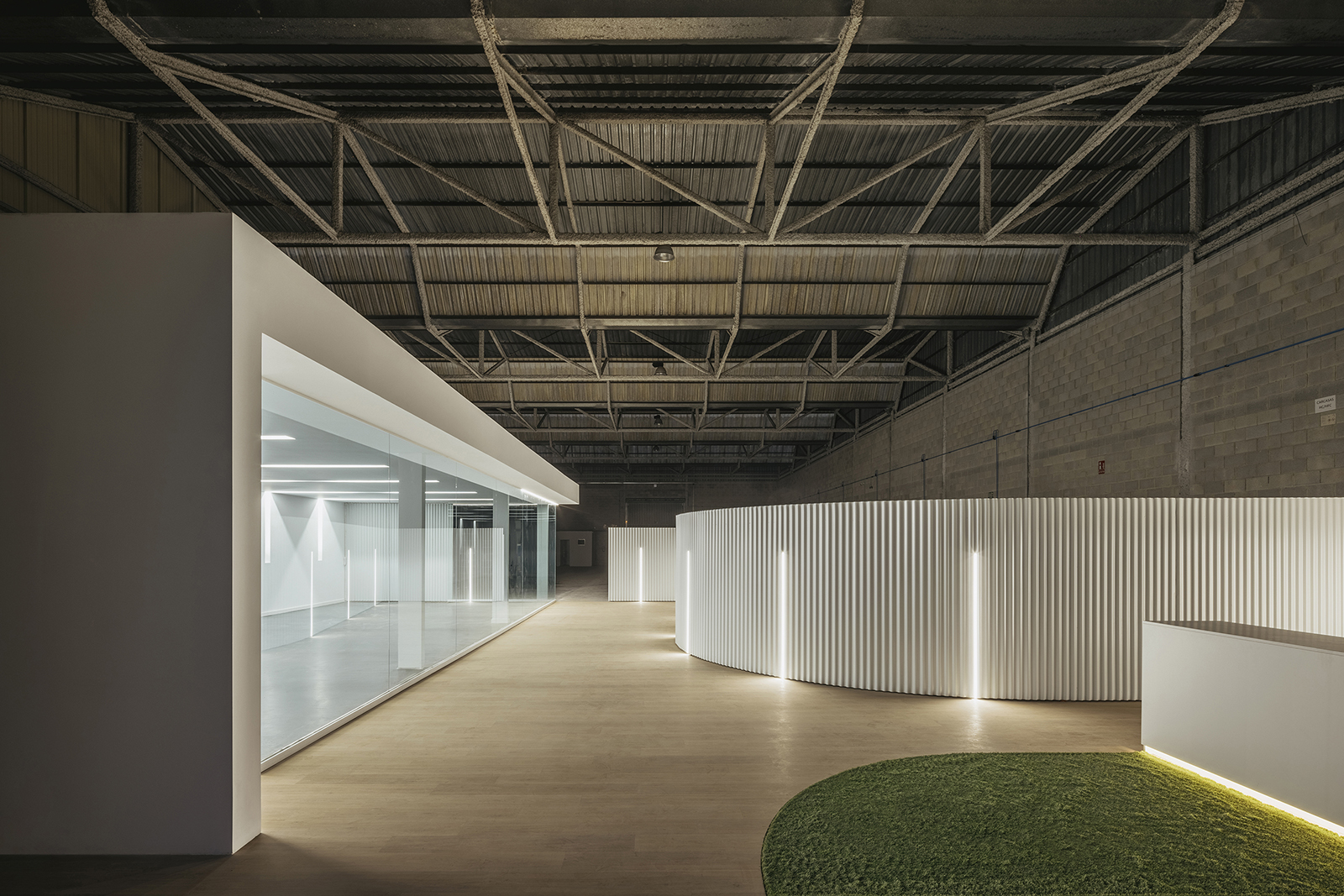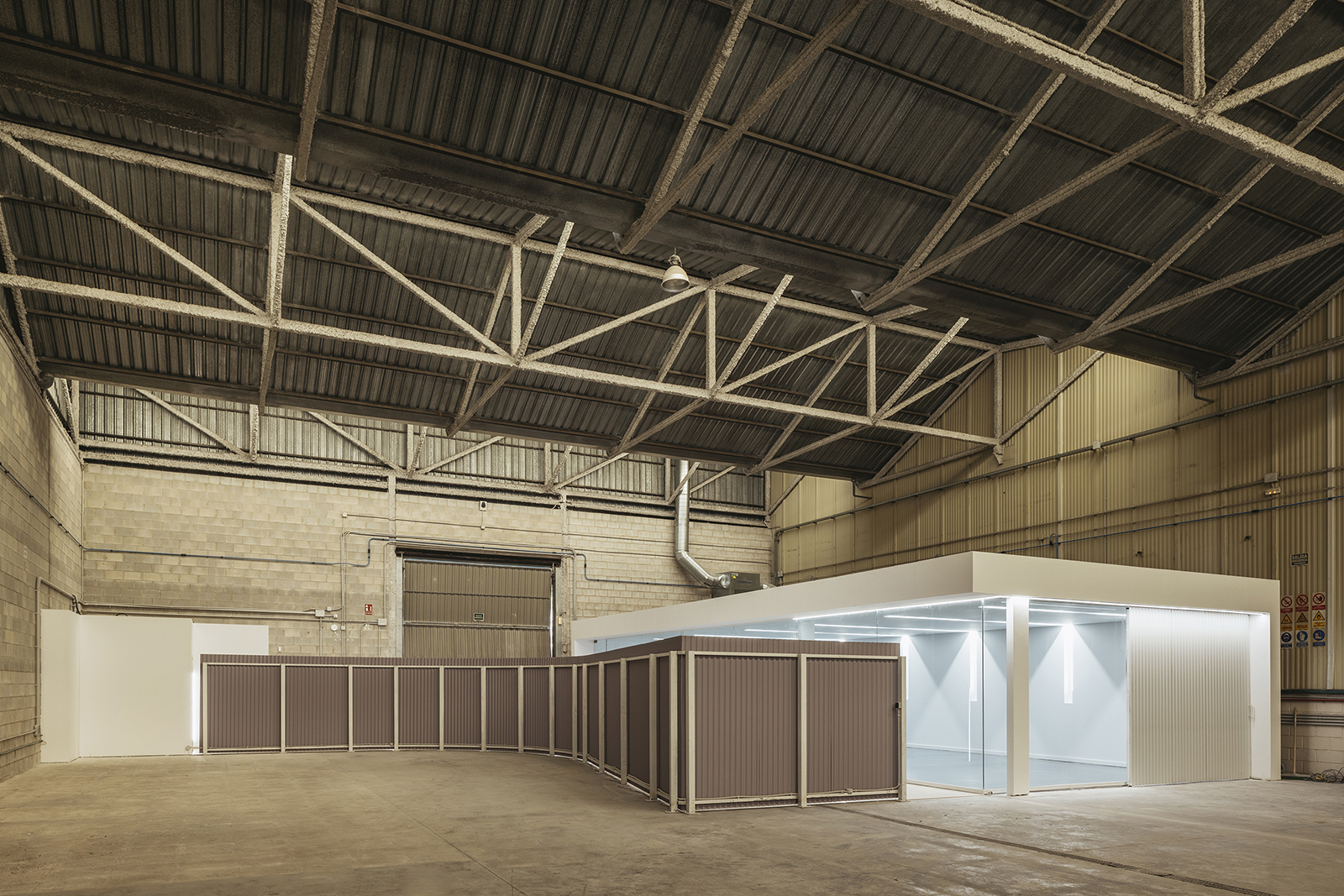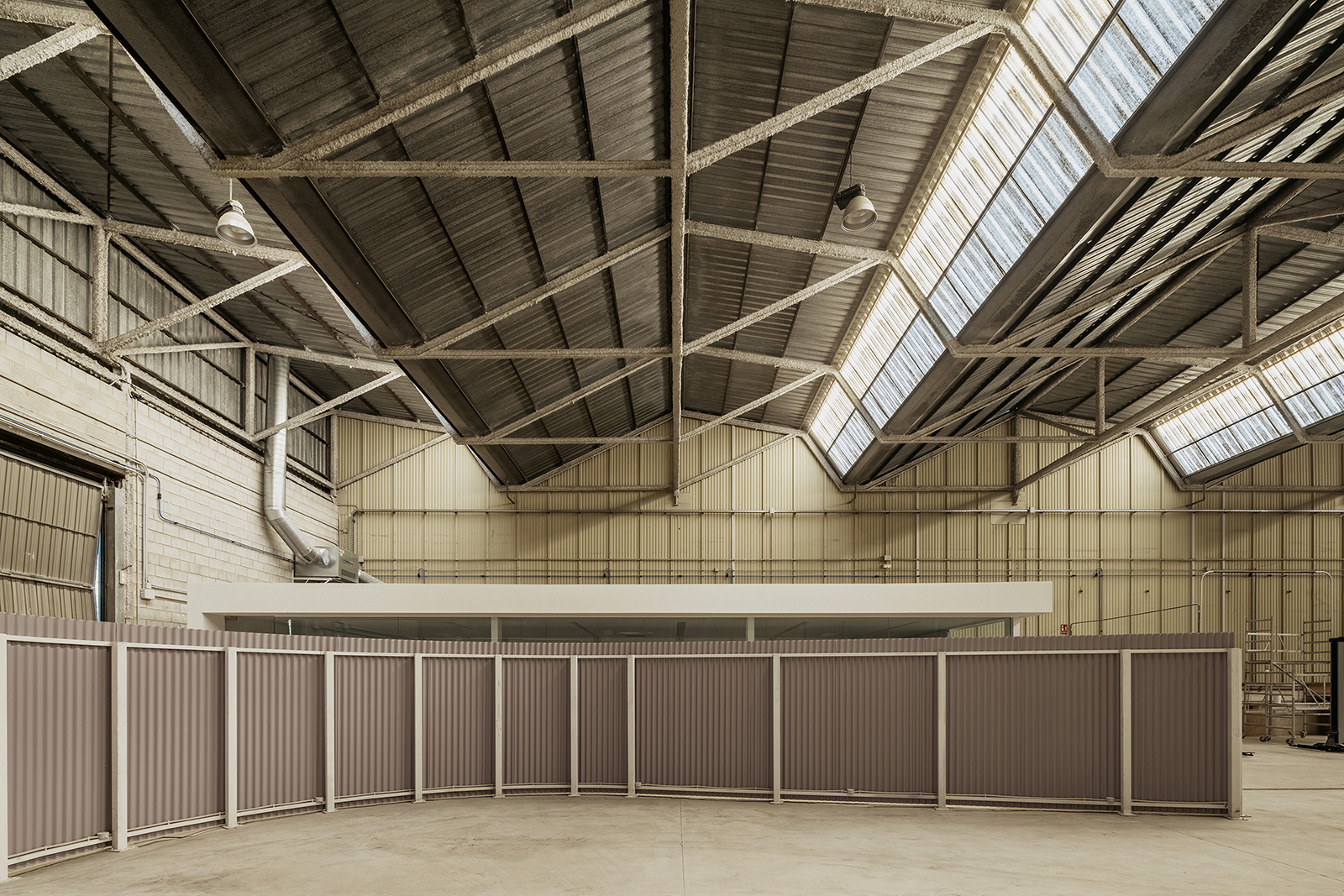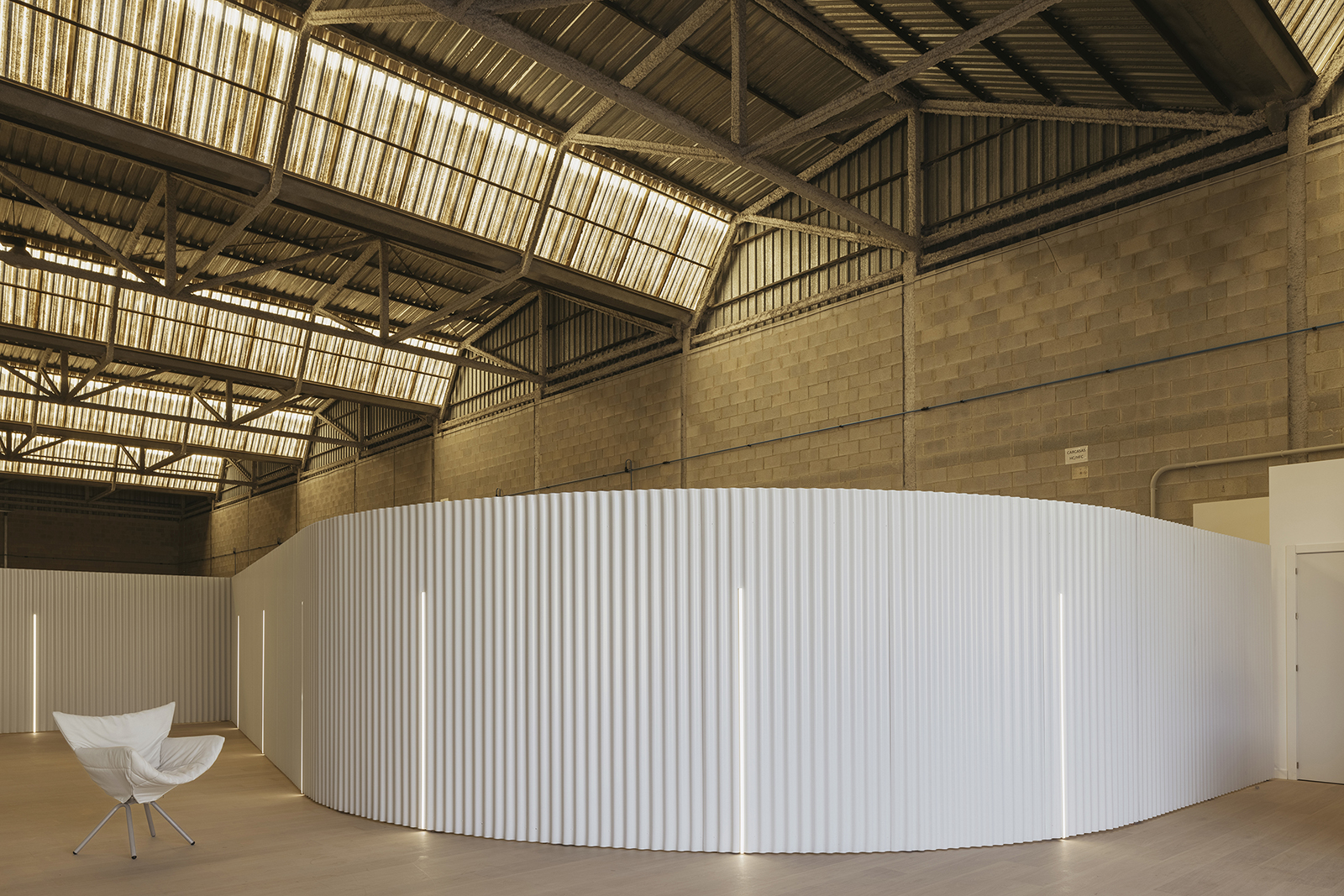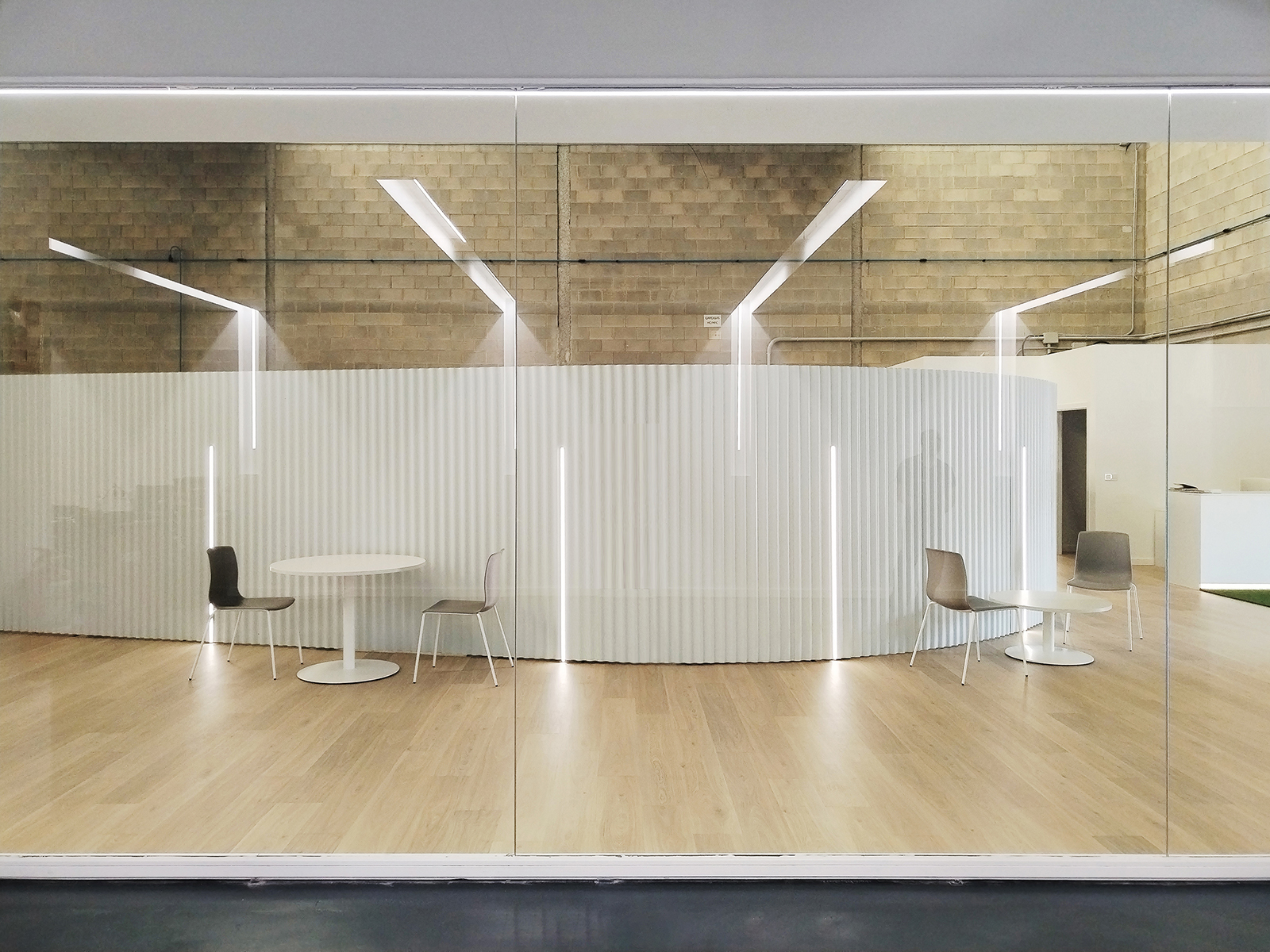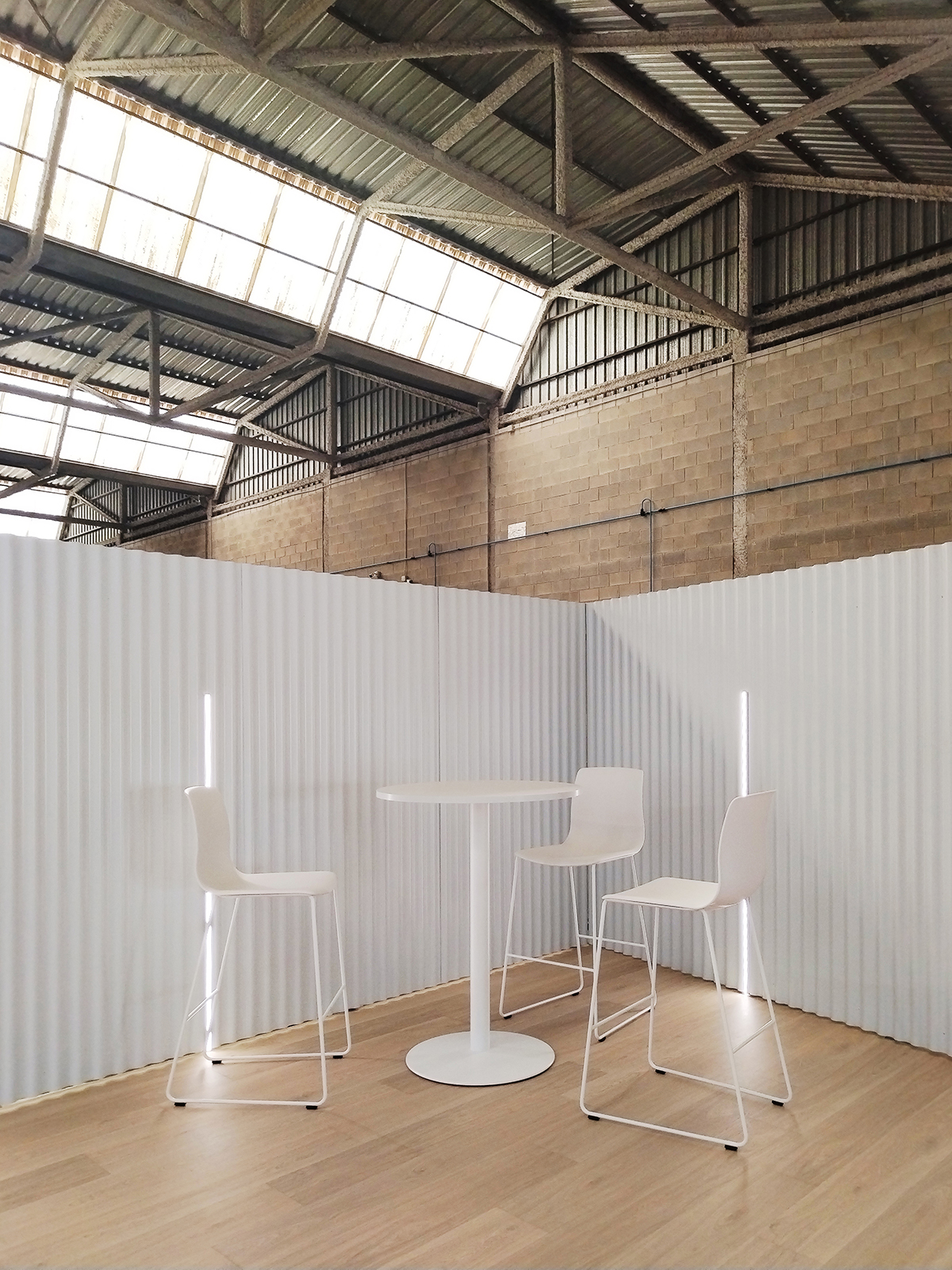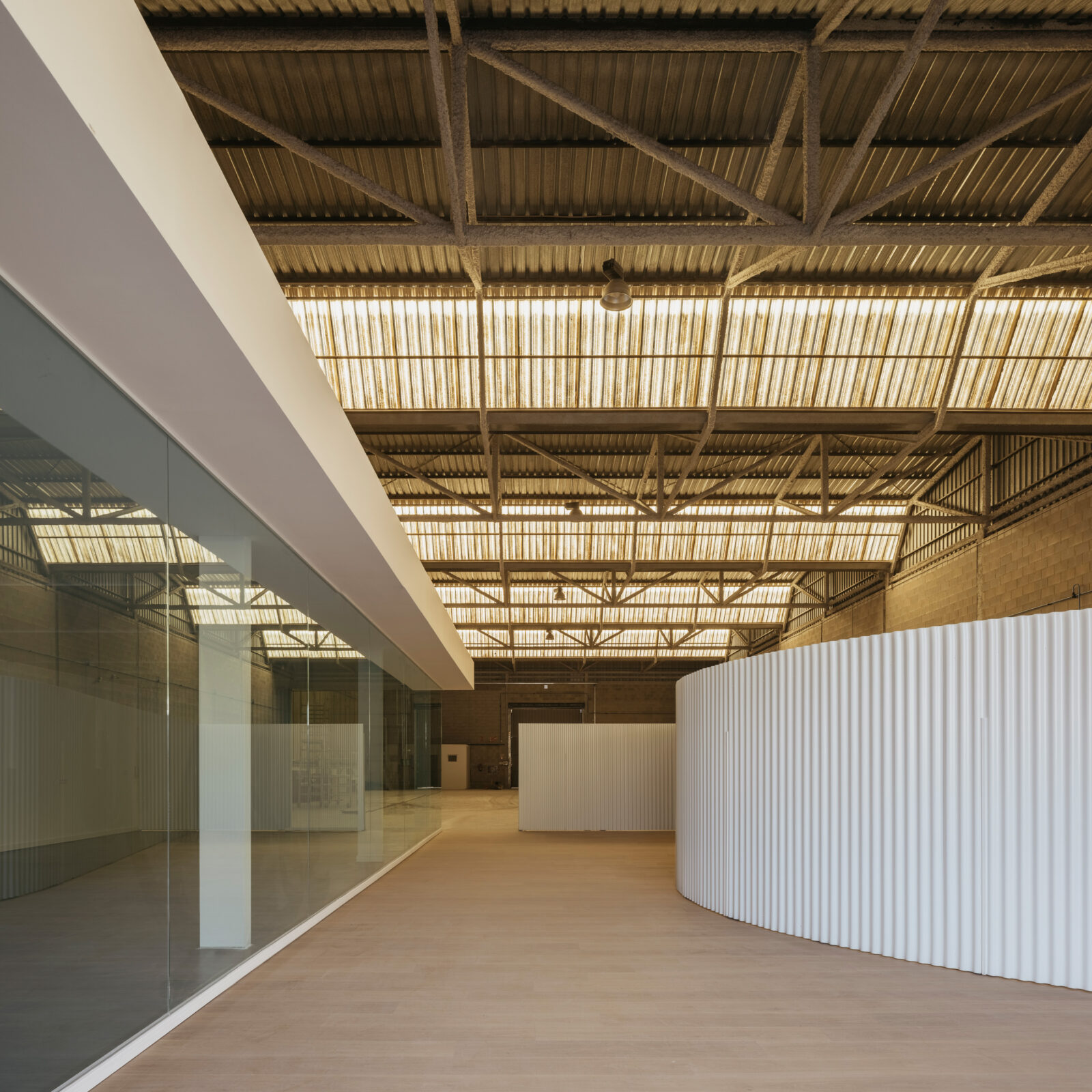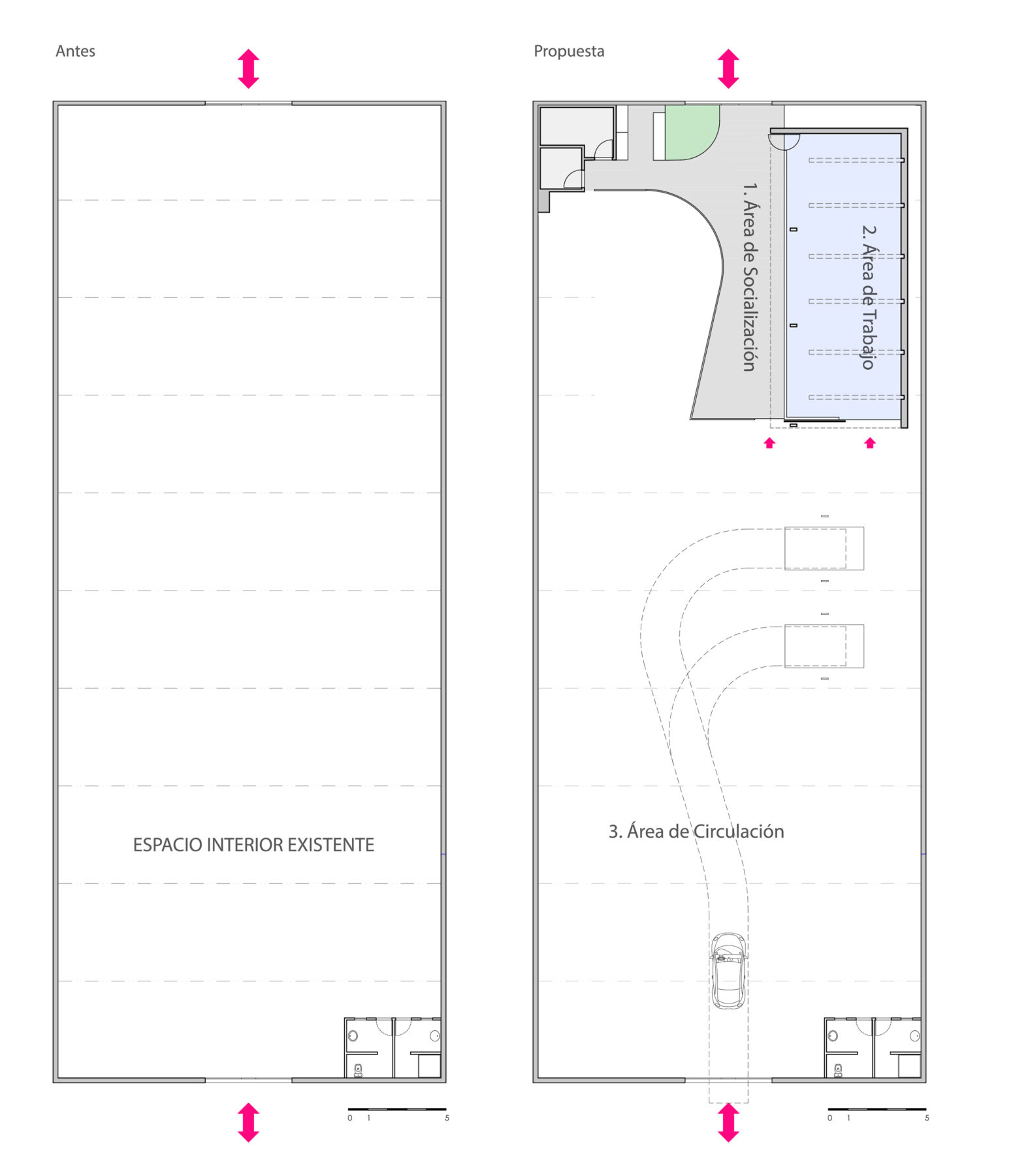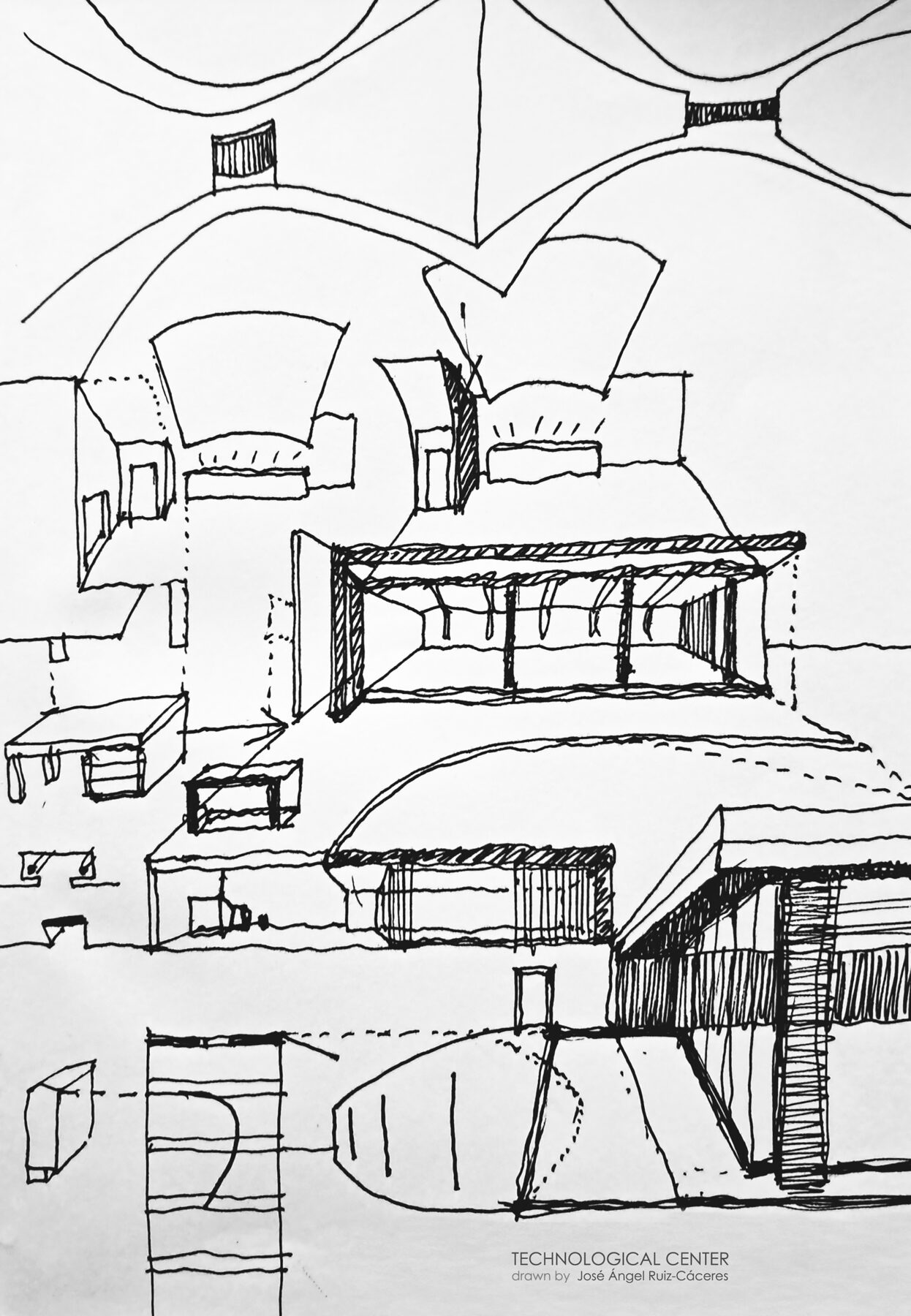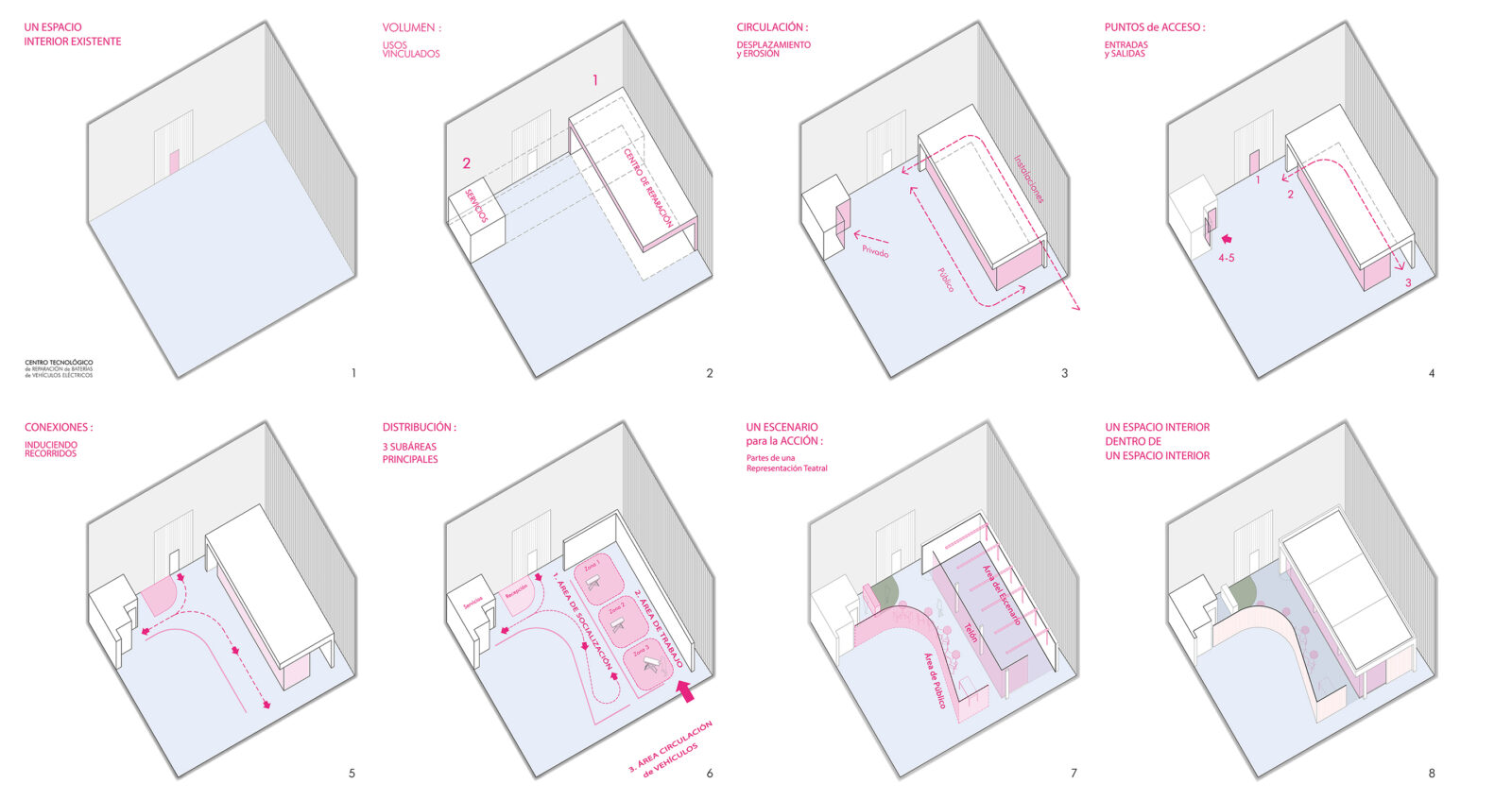The Technological Centre for EV Batteries Repair has being reformed by ESCULPIR EL AIRE / José Ángel Ruiz-Cáceres by keeping in mind the reuse of this existing industrial building within its life cycle, minimising this way its energy consumption.
An interior space within an interior space
The Technological Centre for EV Batteries Repair is a milestone for Environmental Sustainability and the Circular Economy, materialising a pioneering and innovative project in Spain by addressing the new challenges currently facing the recycling of electric batteries in the Automotive world and becoming an Environmental Innovation Proposal. From the start, the proposal incorporates STRATEGIES for the ‘reusing’ of the built environment and the ‘recycling’ of EV batteries, reducing its impact and guaranteeing the quality of the industrial environment where it is developed.
Strategy 1. RE-USE OF THE EXISTING INDUSTRIAL BUILDING: ‘NO-CONSTRUCTION’
Instead of building a new space to house the innovative facility, an existing industrial building has been reused within its life cycle, so that with this first strategic decision, energy consumption has been greatly optimised and carbon emissions –by the ‘no-construction’ process– have been significantly reduced.
Strategy 2. REDIFINING THE TRADITIONAL CAR REPAIR WORKSHOP
Through a process of optimising the ‘know-how’ of the activity, the Technological Centre is able to redefine the memorable experiences we have of the traditional car repair workshop by a great efficiency of the layout.
Strategy 3. AN INTERIOR SPACE WITHIN AN INTERIOR SPACE
The proposal is managed with the same speed and ease as a film set –thin dividing surfaces and simple assembly with controlled lighting– through a spatial sequence that articulates the REPAIR CYCLE: 1. Socialization Area (reception and waiting area); 2. Working Area (Repair Centre); 3. Circulation Area (vehicle access-exit).
Strategy 4. MANIPULATION OF THE ARCHITECTURAL ENVELOPE PROMOTES PERCEPTION OF TACTILE DYNAMICS
In this proposal the research on ‘Induced Ways’ is taken up again to achieve, by means of folded and curved geometries –as well as displacements and erosions–, 2 double simultaneous Induced Ways. Let us remember that the formal manipulation of the architectural envelope is a very powerful amplification engine for the development of our Haptic Experience.
Strategy 5. A DELIBERATED CONTRAST
The new design manages to stand out from the ‘industrial’ through a provocative visual and haptic contrast with the existing, enhancing essential aspects of architecture such as Simplicity, Experience and Light, by means of the use of white surfaces/glass, fixed panels and movable surfaces.
Strategy 6. ‘ACTIVITY-BASED WORK’: FLEXIBILITY FOR A HEALTHIER ENVIRONMENT
The new workspace develops the concept of ‘activity-based working’, where the geometrical layout of the space offers different alternative spaces to support the wide variety of activities that coexist in the daily life both employees and users: individual work, collaboration, online meetings, calls, socialising, etc.
Strategy 7. A STAGE FOR SOCIAL ACTION
Users and workers interact together, united as well as separated, by a large glass surface (analogous to ‘the Curtain’ of a theatre performance) that blocks the way but facilitates Vision through. This social action strategy contributes to the creation of an inclusive and culturally diverse environment, contributing to the integral development of ‘the cold Industrial Community’.
Facts & Credits
Project title Technological Centre for EV Battery Repair
Typology Reform, Industrial
Location Mistral 3, Alicante, Spain
Architecture ESCULPIR EL AIRE / José Ángel Ruiz-Cáceres
Collaborators Héctor Cabrera / Wendy Luguaña / Serob Avayan / Jesús Iborra / Joan Briones
Construction complete 2023
Area 110 m2
Photography Alejandro Gómez Vives
Text provided by the architects
READ ALSO: The Cabanon by STAR & BOARD: a postmodern wonderland, a contemporary Cabinet de Curiosités and a human-scaled architecture in Rotterdam, The Netherlands
